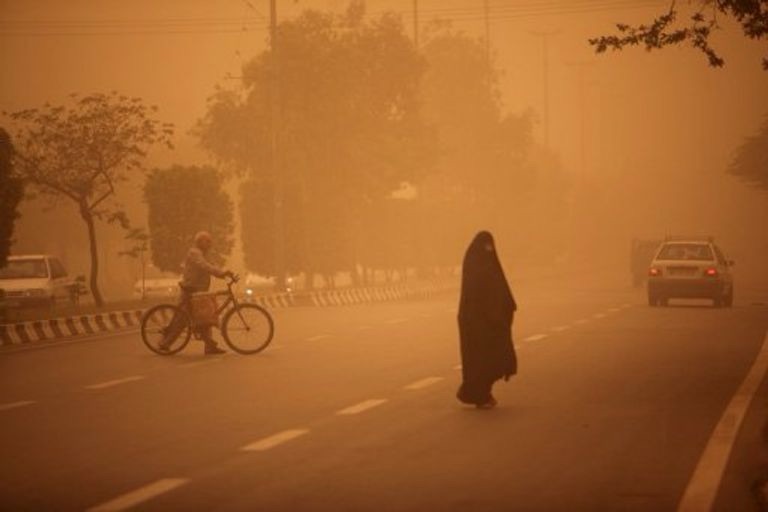
Data from the Iranian Air Quality Monitoring Company show that air quality in Ahwaz, along with several other major cities, has reached an unhealthy orange level, despite Monday, 24 November 2025, being a public holiday in Iran.
Reports indicate that pollution dominates the atmosphere in Ahwaz, alongside Tehran, Karaj, Arak, Isfahan, Urmia, Tabriz, and Mashhad, with the possibility that air pollution levels may soon reach very unhealthy and dangerous levels in these cities.
The Meteorological Organization warned that pollutant concentrations will increase by the end of the week in industrial and large cities, reducing air quality and horizontal visibility. Some schools and universities have already been operating remotely due to pollution.
Residents of Ahwaz, especially vulnerable groups such as children, the elderly, patients with heart or lung diseases, and pregnant women, face serious health risks from the polluted air. These effects include coughing, wheezing, eye irritation, and long-term impacts on brain and cognitive health, according to Iranian health experts.
Ahmad Deliri, head of the Iranian Scientific Association on Aging, warned that long-term exposure to polluted air could increase the risk of cognitive decline and Alzheimer’s disease by 10–60%, as fine particles smaller than 2.5 microns can enter the bloodstream through the lungs or directly reach the brain via the olfactory nerve, potentially causing silent neurodegeneration over years.
Amitis Ramazani, head of the Iranian Infectious Diseases Association, also noted that air pollution can trigger respiratory diseases such as chronic bronchitis and asthma, a trend increasingly observed among Ahwaz residents, along with rising cases of allergies, fatigue, and recurring physical ailments.
Despite the ongoing crisis, Iranian authorities have yet to take decisive action to reduce air pollution in Ahwaz and other major cities, exacerbating health risks and threatening residents’ daily quality of life.


